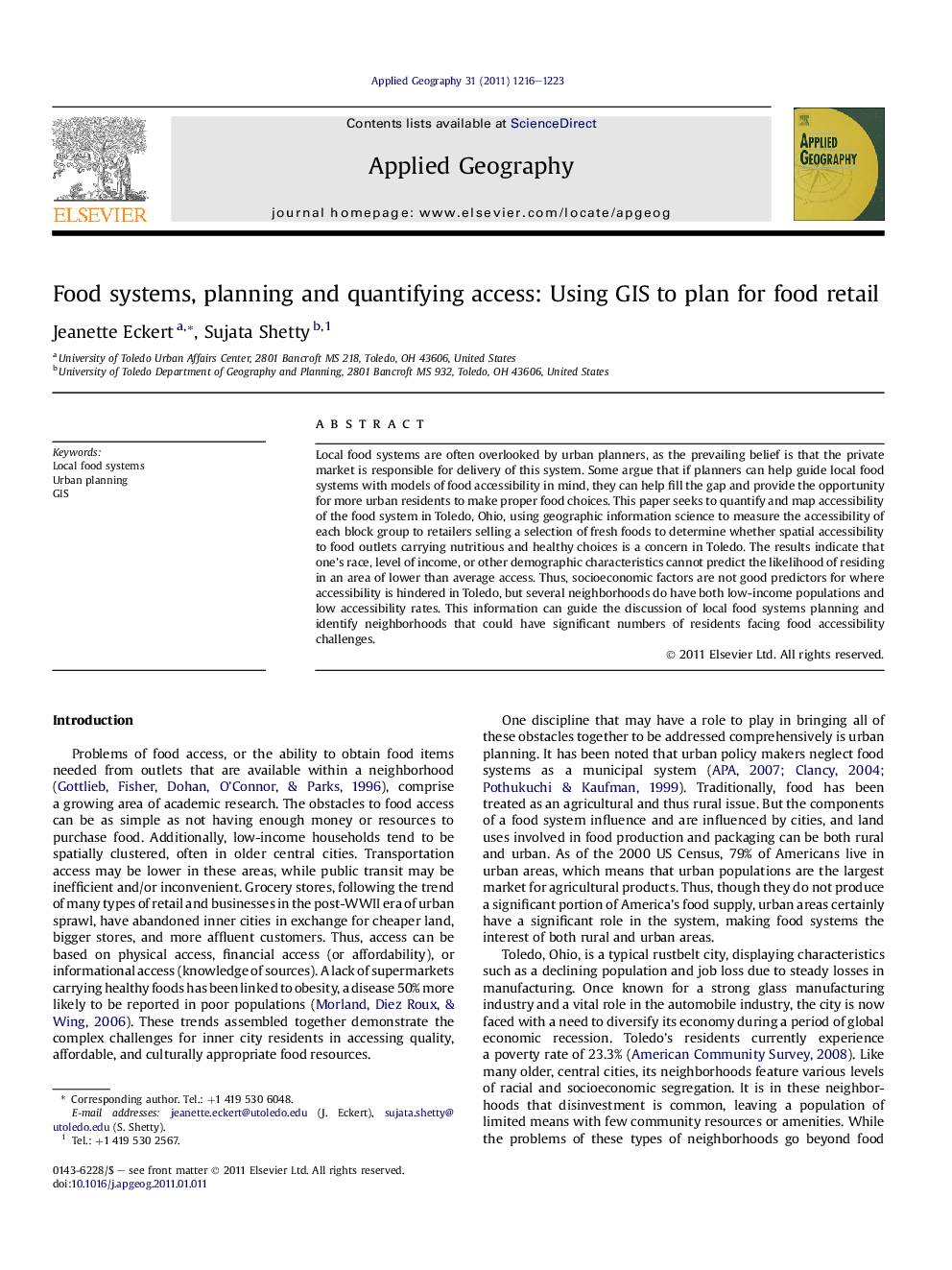| Article ID | Journal | Published Year | Pages | File Type |
|---|---|---|---|---|
| 83684 | Applied Geography | 2011 | 8 Pages |
Local food systems are often overlooked by urban planners, as the prevailing belief is that the private market is responsible for delivery of this system. Some argue that if planners can help guide local food systems with models of food accessibility in mind, they can help fill the gap and provide the opportunity for more urban residents to make proper food choices. This paper seeks to quantify and map accessibility of the food system in Toledo, Ohio, using geographic information science to measure the accessibility of each block group to retailers selling a selection of fresh foods to determine whether spatial accessibility to food outlets carrying nutritious and healthy choices is a concern in Toledo. The results indicate that one’s race, level of income, or other demographic characteristics cannot predict the likelihood of residing in an area of lower than average access. Thus, socioeconomic factors are not good predictors for where accessibility is hindered in Toledo, but several neighborhoods do have both low-income populations and low accessibility rates. This information can guide the discussion of local food systems planning and identify neighborhoods that could have significant numbers of residents facing food accessibility challenges.
► GIS analysis provides quantitative and measurable food access data. ► Toledo does not have large or clearly defined food deserts in the traditional sense. ► However, certain neighborhoods, particularly in the central city have a longer distance to food, on average, than the rest of the city, especially when distance to stores carrying a wide variety of fresh foods is measured.
